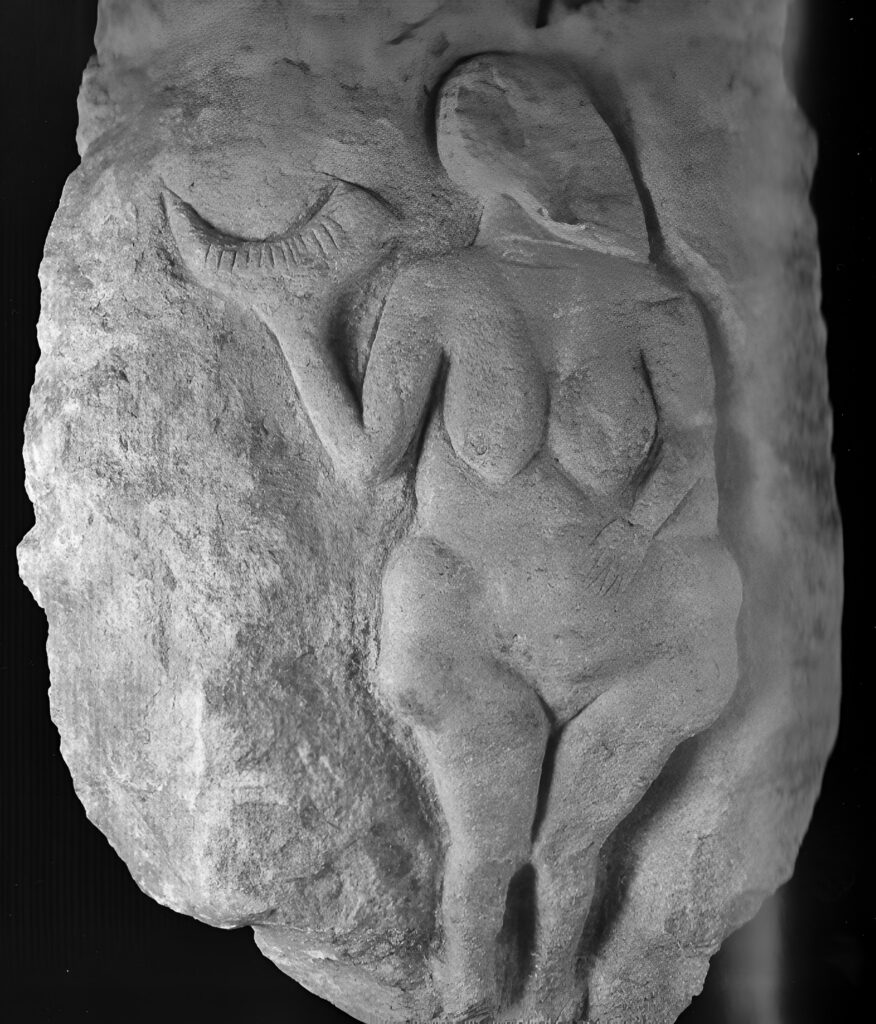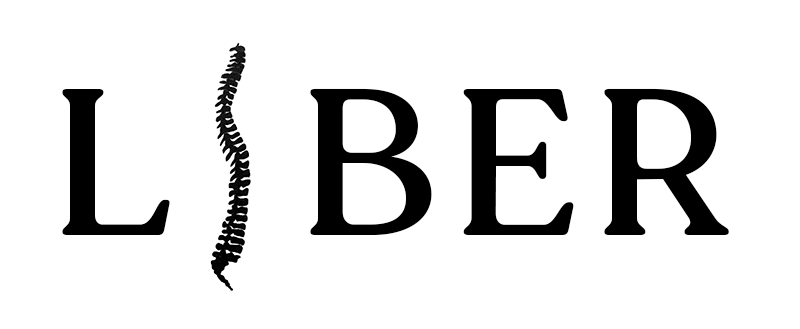
It’s hard to think of another topic on which educated people misspeak so glibly as the naturalness of patriarchy. Claims like “most societies have been male-dominated” are tossed out to right and left with only a murmur of thought: Maybe men habitually rule through physical strength, or because women are busy with babies? And in turn, the falsehood sprouts truisms that reinforce it further:Human nature is just violent, we assume; greed and inequality are intrinsic to civilization. And, as Heide Goettner-Abendroth puts it in Matriarchal Societies of the Past and the Rise of Patriarchy, “Current archaeological practice . . . still perpetuates the patriarchal view of history.”
But not for long. First released in German in 1988, and (finally!) published in English in 2022 to the joy of her many eager followers (of which I am one), this book, which traces matriarchal societies from the Paleolithic into the Bronze Age over half the globe, seems capable of sweeping away those unfounded patriarchal axioms and all the stubborn stale lies that cling to them, opening the way for generations of matriarchal scholars to come. In short, this is the kind of book that not only changes knowledge; it changes thought.
Goettner-Abendroth, author of the comprehensive survey Matriarchal Societies: Studies on Indigenous Cultures Across the Globe, is the founder of Internationale Akademie HAGIA and founding mother of the field of research known as modern matriarchal studies. She opens Matriarchal Societies of the Past and the Rise of Patriarchy (MSPRP), her second magnum opus, by laying out the staggering implications of modern matriarchal studies as a “new paradigm” of thought that encompasses “the entirety of known cultural history and . . . societal forms of the present” as well as “the content of all the cultural and social sciences.”
In order to fulfill this shocking and ambitious promise, she first introduces new terminology to replace the patriarchally loaded term “prehistory.” What is traditionally called “history,” she points out, “always only begins with establishment of classically patriarchal patterns: hierarchical social structures with dominant men at the top; a subordinate status for women and other population groups; the foundation of territorial states with dogmatic state religions. Structures of this kind are hailed as . . . the beginning of civilization, in comparison with which all else is given the prefix ‘pre.’” Instead of following this paradigm, MSPRP uses the terms “primeval” or “early history,” which “refer to time sequences and do not imply value judgment.”
Goettner-Abendroth next continues the process of cleaning up patriarchal scholarship’s intellectual messes by turning to “the discourse of eternal war.” This widespread patriarchal projection misunderstands the piles of lovingly cleaned skulls of beloved ancestors placed in early “double burials” as the remains of massacres and “interprets every wall and ditch around a Neolithic village as a ‘fortification’ of a military sort—though these were more likely to be defenses against wild animals.” A related falsehood, which she dubs the “Big Man theory,” is a blatant projection of contemporary patriarchy’s individualism, violence, and greed. Although the archaeological record contains clear indications of egalitarian societies based on matrilineal clans in the Paleolithic era, the Big Man theory perceives the patriarchal nuclear family in that same evidence. In the face of widespread archaeological and anthropological evidence that the earliest societies were based on a gift economy, proponents of the Big Man theory see proof of exchange and exploitation. The Big Man is assumed to have built “megalithic architecture—completely unproven—for himself alone, as opposed to the idea that it was a community project for the communal use of whole clans.” The Big Man even “mutates into a priest who has religious monopoly and ‘controls access to the ritual places,’” in stark contrast to the communal spiritual practices indicated by the evidence. And so on.
One of the joys of reading this book is the obvious pleasure that Goettner-Abendroth takes in bringing all her expertise together in this career-capping project. She is that rare type of thinker who is not only daring, original, and liberatory in her ideas but equally rigorous, careful, and tireless in the research that backs them up. (The book’s bibliography is twenty-two pages long.) Aware of the revolutionary potential of this work, she has set out to make a bulletproof argument. Indeed the first half of MSPRP is jam-packed with detailed, wide-ranging, mind-blowing evidence of the matriarchal roots of our species from around the world, all thoroughly illustrated with maps, diagrams, drawings, and photos of art and architecture: Maltese temples in the shapes of mother-daughter goddesses; priestesses dancing in a sacred grove in Knossos; five large vulvas, each colored red, in a Spanish cave; a goddess on a lion throne; a rock painting of women cultivating the fields from the fifth century BCE; mounted Amazons with weapons; figurines of an ancestral motherline from Mesopotamia; mountains named after a goddess’s breasts; the goddess Lilith as giver of death; etc.

This is the go-to book for any questions you have ever had about matriarchy. What is a matriarchy, really? (It is not the reverse of patriarchy but rather an egalitarian society where all live according to maternal values such as nurturing, respect, and peacemaking). Why use this term? (Goettner-Abendroth sees women not at the top but at the center and the beginning; she retains the term “matriarchy” in view of its literal meaning, “mothers at the beginning.”) What differences or hierarchies structure matriarchal society? (They are “age-class” societies with great respect for motherhood.) How is it governed and what are its economics? (Consensus decision-making and a gift economy.) What is its attitude toward sexuality? (No moral judgments on sexuality; complete independence with women having the final say). What religious structure characterizes matriarchy? (Rooted to the Paleolithic times, “a comprehensive rebirth religion in which the central principle was to honor the Earth as the primordial mother and woman in her image.”)
Goettner-Abendroth marshals powerful evidence that women are the original creators and guardians of human culture, responsible for developing shelter, fire (“all indigenous societies know women as keepers of the fire”), food gathering and preserving, clothing, language and education (which arose within mother-child groups), medicine, calendars (based on menstruation and lunar cycles), and religious ceremony (based in the “rebirth” religion where women are keepers of death and of life—including of animals, so they initiate men into hunting rituals).
Her discussion of women and houses is a good example of her graceful interweaving of extensive archaeological and anthropological evidence. For women’s role in neolithic housebuilding, she finds corollaries in women owning tents in Mongolia and the Sahara, and the fact that “the construction and deconstruction of permanent clay dwellings among indigenous peoples in Africa and the Americas is solely women’s work. Women developed these skills, and the houses are theirs,” she tells us. “The house itself is considered female and is decorated with attributes such as breasts and a vulva symbol at the entrance. Even linguistically, ‘woman’ and ‘house’ are identical, as examples from Africa show.”
Matriarchy is a fundamentally different structure from patriarchy. Women’s central importance in matriarchy as Goettner-Abendroth describes it does not lead to them amassing extra possessions or power over other people. Although “men probably depended more on the skills of woman than vice versa,” matriarchal society is profoundly egalitarian. Nonetheless:
the mother-child group becomes the basis of all other social groupings. . . . All social forms depend on it and refer to it in one way or another. . . . Even men’s organization of the hunt was not independent of the women’s group. . . . From all this we see the great economic importance of women in Paleolithic times, which has been completely obscured by the fantasy image of “Man the Great Hunter.”
I found the first half of this book profoundly moving and humbling. Absorbing such strong, lovingly gathered research about how human culture first developed under the wisdom of women, I felt I had been wandering all my life in pitch-darkness in a house full of legends of violence and terror, where Goettner-Abendroth had begun walking ahead of me turning on lights one by one. The home of my ancestral lineage, it turns out, is not dark and frightening but beautiful, sensible, inspiring. The obvious reality of the house, in spite of the patriarchal horror stories of “the dawn of man” on which I was raised, is right there for all to see. To read social science that actually matches up with my lived experience, deepest intuition, and common sense is empowering to such an extent that I can only call it radical.

The second half of the book is equally detailed and comprehensive in its description of how patriarchy arose in different ways in Europe and West Asia. Patriarchal Sumerian and Assyrian city-states developed in West Asia due to centralization of power based on increasingly dry and salty soil, while patriarchy arrived in Old Europe via a band of young Indo-European invaders, fleeing an increasingly hostile climate and equipped with horses, bronze weapons, a culture of mass rape, and social structures of male dominance. In each case, patriarchy was first set in motion by climate changes. And in each case, it mutated into a hierarchical, oppressive, monotheistic social structure in which a small group of men dominated, by force, most other men and all women.
Placing Greek, Roman, Celtic, and Germanic civilizations within the context of their violent conquests of older, highly evolved matriarchal societies reveals them in a chilling yet bracing new light. “Only by acknowledging that, before the various patriarchal societies, a completely different social order had been commonplace,” writes Goettner-Abendroth, “can we fully appreciate . . . the role of women as creators of culture.” Also revelatory are her discussions of Minoan civilization, which demonstrated “what brilliant cultural heights a matriarchal society can develop when left undisturbed” (though the Minoans were ultimately, in the wake of a devastating natural disaster, conquered by the patriarchal Achaeans), and of how Amazons, whose existence as an all-female warrior culture is supported by recent archaeological finds, successfully resisted the rise of patriarchal power for a millennium.
This is the kind of book many of us, whether or not we normally read about archaeology, will just want to have around, to dip into at random, to pull from the shelf for expert opinions on the great questions, to browse for inspiration (I have been using it for bibliomancy!), and to remind ourselves that patriarchy is a temporary invention. As Goettner-Abendroth puts it, “This book looks at the emergence of patriarchal patterns. . . . However, as these patterns evolved, it becomes evident that they are by no means natural, but rather historical, and can therefore be overcome.” There are an increasing number of books on matriarchy coming out now at last. This one is the benchmark, the touchstone over the long haul.

